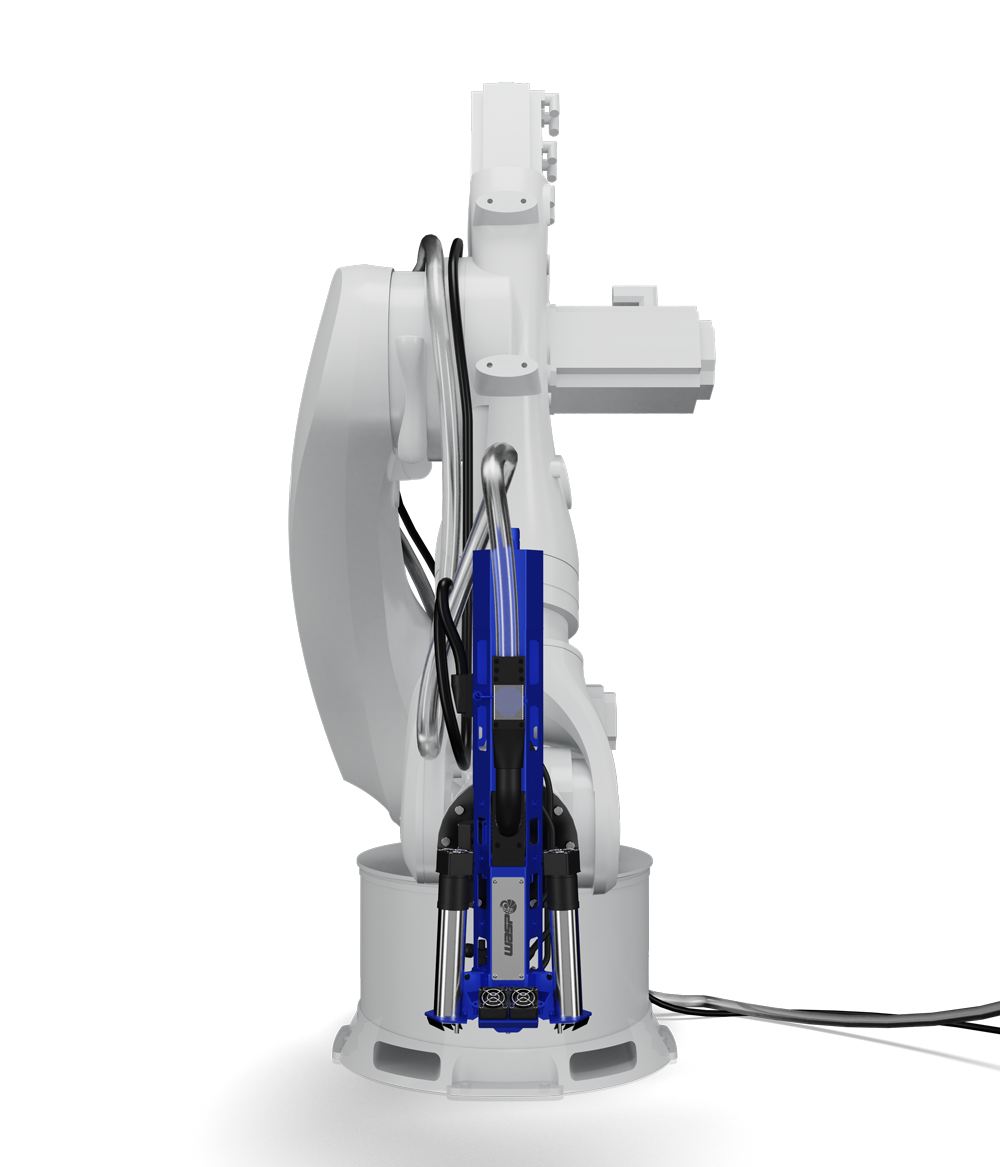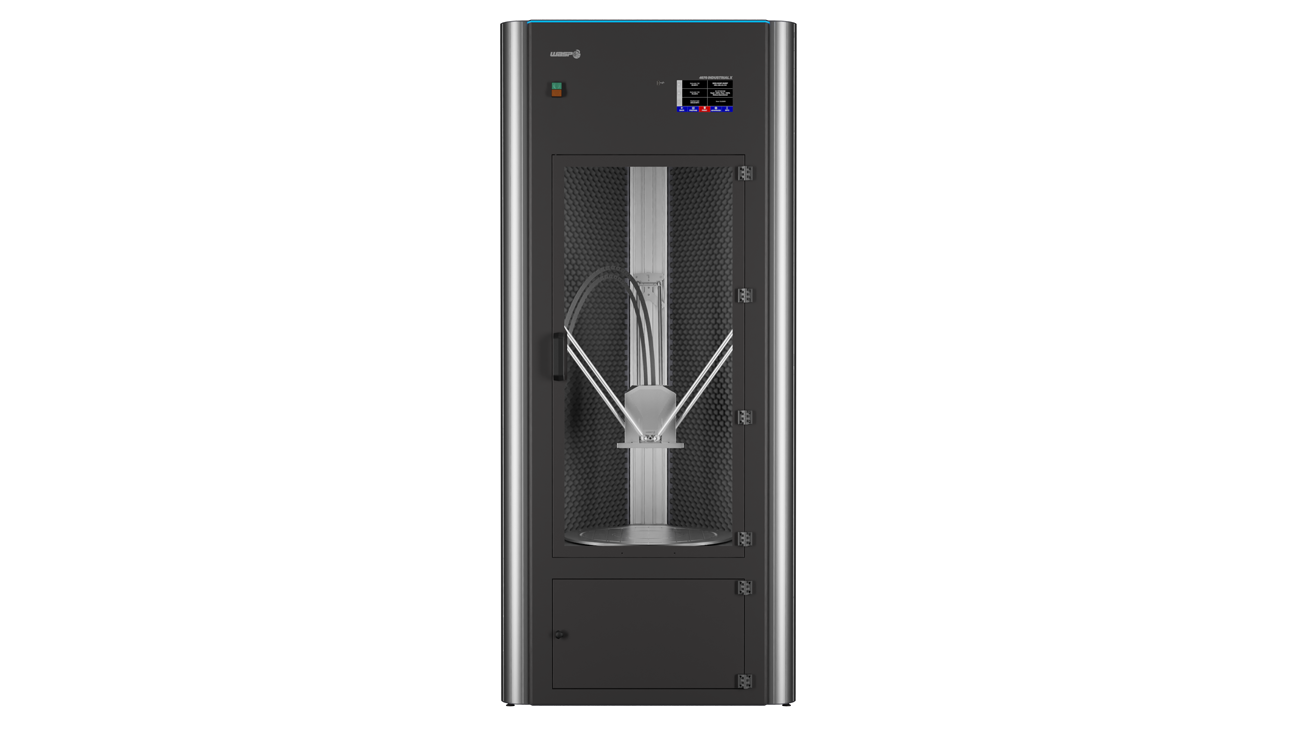From zero impact houses, 3D printed with raw earth and rice processing waste in Italy, to beautiful stores for high-fashion brands in Dubai, additive construction firm WASP is open for business. This large-scale 3D printing technology manufacturer has a cluster of high-end machines to handle design and engineering challenges. Still, more importantly, WASP’s out-of-the-box thinking has led this firm to become one of the most renowned 3D printing firms in Europe.
At the Formnext 2021 event this week in Frankfurt, Germany, WASP presents seven innovative machines. Each of them is dedicated to a different industrial sector and are all part of its clay and industrial printer line. To showcase these large platforms, WASP has secured two stands and one exhibition booth at the highly awaited event.
With the two booths, the prestigious Italian firm has ensured there is enough room for attendees to get acquainted with its fused deposition modeling (FDM) and liquid deposition modeling (LDM) technologies. Additionally, fans of robotic arms will be indulged with two WASP Robotic Arms 3D Printing systems that extrude fluid-dense materials, such as concrete and plastic granules.
In stand G102, located in Hall 12.1, visitors will get to see the company’s FDM technology and the new printers in its industrial line. Here, WASP exhibits two large dimension 3D printers, the 3MT HD Pellet (HDP) and 4070 HDP, designed to build with pellets and recycled plastic polymers in granules in a fast, precise, and cost-effective way.
The technological innovations are linked precisely to WASP’s pellet extruder that directly prints the granules and the continuous pneumatic system that feeds the material, reducing costs and lead times. These systems also rely on a patent-pending Firecap system that generates a localized hot chamber directly on the printing area without overheating the mechanics and allowing optimal printing and layer adhesion. Another innovation is the vacuum active control (VAC) system, a vacuum printing plate that ensures no micro-movements during printing, even at high temperatures.
In addition, the stand will showcase the new 4070TX designed to print technopolymers such as PEEK in large sizes, the 4070 Flex Extruder, which prints soft materials, and the 4070 Zen Extruder, handling industrial materials such as PA Carbon.
Meanwhile, in Hall 12.0, WASP’s B59 booth will be dedicated to LDM technology and the new line of clay printers. On display will be the 4070 Industrial Clay, which was created in collaboration with Honda R&D Europe for extruding industrial clay and building prototypes with an entirely new industrial process, as well as the brand’s flagship Crane WASP.
This construction 3D printer is usually relied on by universities, research centers, and global brands. For example, the Crane WASP built the first internationally renowned bioclimatic housing modules in raw earth and natural materials, called GAIA, followed by the zero impact TECLA house and recently, a duo of concept stores in Dubai for international fashion brand Dior.
Finally, the stand will showcase the new WASP 40100 Clay Continuous Feeding, another patent designed to print clay in large format thanks to a continuous material feeding system equipped with a 10-liter tank.
Aside from the two official stands, WASP will also exhibit a specimen of the TECLA wall, printed in earth and natural materials at the exhibition BE-AM HALL 11.0 stand E26-28. TECLA, which takes its name from Technology and Clay, was a challenging eco-sustainable 3D printed habitat made with locally sourced natural materials and multiple 3D printers operating simultaneously.
Proposed as a circular model housing, the design was built in the Massa Lombarda region in Italy, proving that two printing arms can construct a house avoiding collisions and ensuring simultaneous operation within 200 hours, and using 60 cubic meters of natural materials. The fact that visitors get to see a mock sample of that work is extraordinary.
Today, this major additive construction business is home to some of the most exciting projects and advanced 3D machinery, attracting top architectural studios, universities, global brands, and engineers. The story of WASP 3D began with a way of thinking that demanded “building big.” Founder Massimo Moretti is obsessed with taking inspiration from nature, particularly the potter wasp, which builds its own nest with material recovered from the surrounding environment, moves that WASP wants to recreate using large 3D printers and aiming for some of the lowest costs in the construction industry.
A wide range of WASP 3D printers has been developed to answer human needs: food, housing, health, energy, work, art, and culture. The main company target is to provide effective benefits to humans through technological innovation and research. In 2012 WASP presented its first printer, the Power WASP, but today it has a host of platforms ready to take on any construction challenge.
Subscribe to Our Email Newsletter
Stay up-to-date on all the latest news from the 3D printing industry and receive information and offers from third party vendors.
You May Also Like
Precision at the Microscale: UK Researchers Advance Medical Devices with BMF’s 3D Printing Tech
University of Nottingham researchers are using Boston Micro Fabrication‘s (BMF) 3D printing technology to develop medical devices that improve compatibility with human tissue. Funded by a UK grant, this project...
3D Printing Webinar and Event Roundup: April 21, 2024
It’s another busy week of webinars and events, starting with Hannover Messe in Germany and continuing with Metalcasting Congress, Chinaplas, TechBlick’s Innovation Festival, and more. Stratasys continues its advanced training...
3D Printing Webinar and Event Roundup: March 17, 2024
It’s another busy week of webinars and events, including SALMED 2024 and AM Forum in Berlin. Stratasys continues its in-person training and is offering two webinars, ASTM is holding a...
3D Printed Micro Antenna is 15% Smaller and 6X Lighter
Horizon Microtechnologies has achieved success in creating a high-frequency D-Band horn antenna through micro 3D printing. However, this achievement did not rely solely on 3D printing; it involved a combination...

































